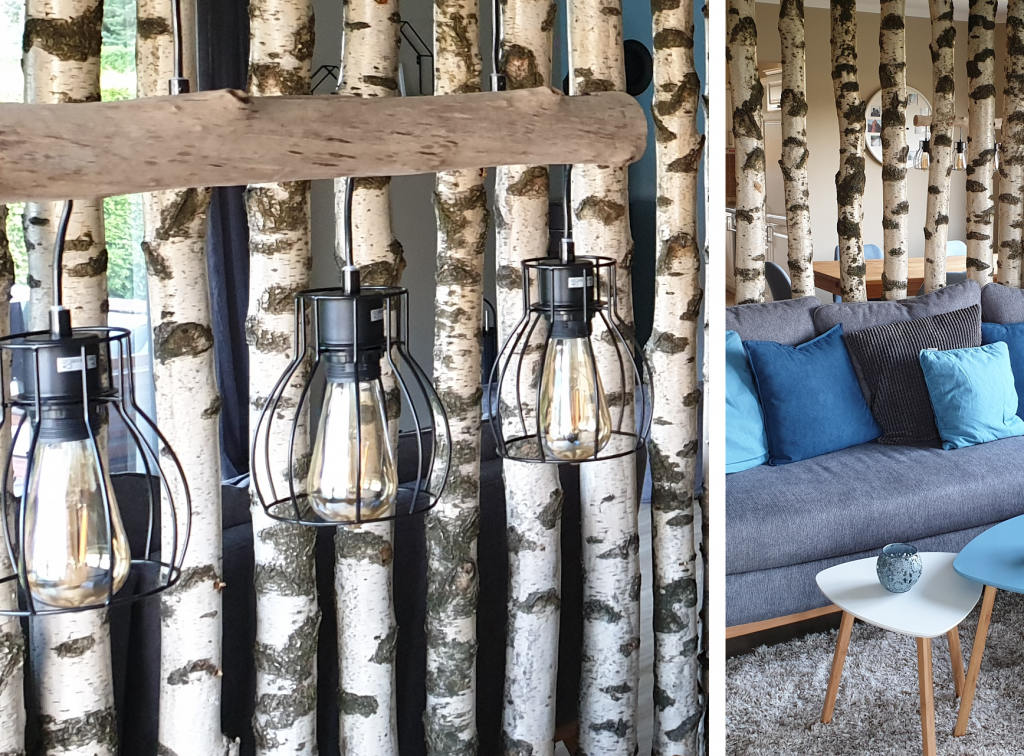room divider – great tool to create different areas at home
You probably guessed it: Room dividers offer the wonderful opportunity to subdivide rooms, for example to create different zones and atmospheres, to create more comfort due to smaller room sections or to provide some privacy.
Maybe you want to do it like the participants in my new course, who create wonderful cozy spaces of different characters, and you need to separate your corner from the rest of the room. Here’s my small „divider-lesson“ with great ideas and tips how to start!

Preparation is everything – boring but true
Before it comes to the construction and execution, you should consider which function the room divider should fulfill. Is it intended as a fixed privacy screen and should be as opaque as possible? Should it subdivide a large room into smaller protective zones without optically reducing the space too much? Should it only mark an optical boundary that does not have to be structurally massive?

So far, I myself have used movable and fixed elements: mobile plant as a separation, light textile fabrics or a small wall made of birch trunks. In addition to taste, the design always depends on function and the structural conditions.
But think about the installation. How is it connected to ceiling, wall and floor? Is the room divider even free in the room? Is there a suspended ceiling that makes installation more difficult? Which structural requirements are there and which model of room divider could be constructively implemented at all? An absolutely safe assembly is of course extremely important and you should definitely check in advance whether the components such as the ceiling and wall can support your construction at all.

A small overview of the possibilities that certainly leaves plenty of space for additions
Drywall
An inserted wall panel in drywall does not require much effort and separates areas from one another so that they are opaque. This changes the viewing axes, which can be exciting, but could also result in a completely new spatial impression.
Frame construction with slats
A frame construction with slats or squared timber can be a very elegant solution. The generosity of a room is essentially retained, but there is still a fixed separation of the areas. Depending on the distance between the battens and the permeability, the room is perceived more or less as a unit.
Tree trunks
These are also firmly fixed to the ceiling and floor, but could first be mounted on a beam above and below. Can bring a little nature into more sober rooms or be the icing on the cake for a hygge style.
Textile elements
Lightweight textile elements, semi-transparent, have the advantage that they have a very low weight and can therefore be installed under most ceilings. They look more like a curtain, allow a view through, but still give some privacy. Even if the eye sees everything, there is a small demarcation or enclosure.
Plants or other mobile elements
You can also create small enclosures by placing plants and thus define an area. Above all, mobile elements such as a half-height shelf on castors have the great advantage that they appear particularly light and informal.
P.S.: You would love to create your space in early 2021? My next course will start at the beginning of next year. Sign up for the waiting list here
Don’t want to wait? No worry, 3 spots 1:1 mentoring are available for December 2020. Send me a mail here hello@studiokristinengel.com
